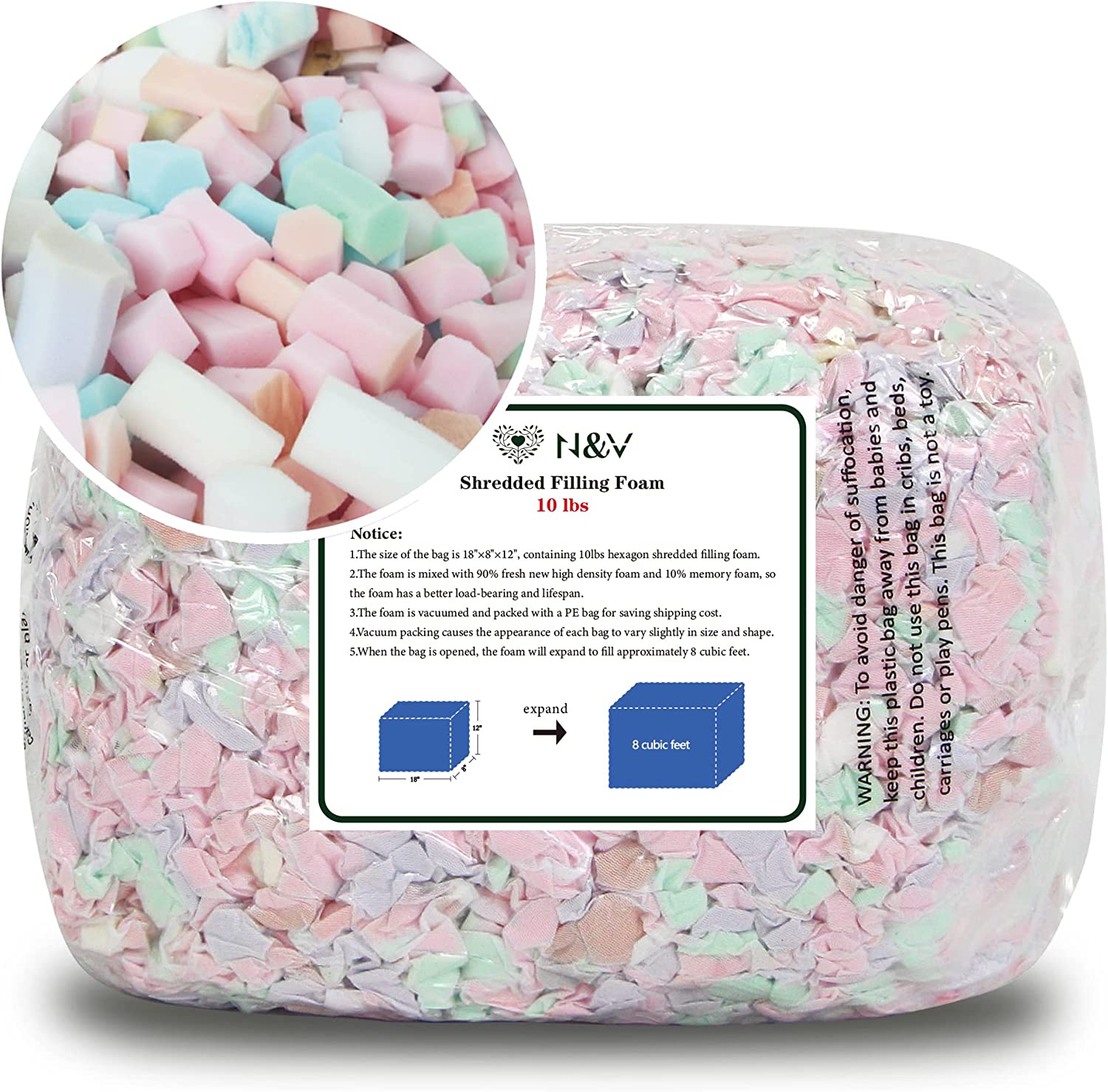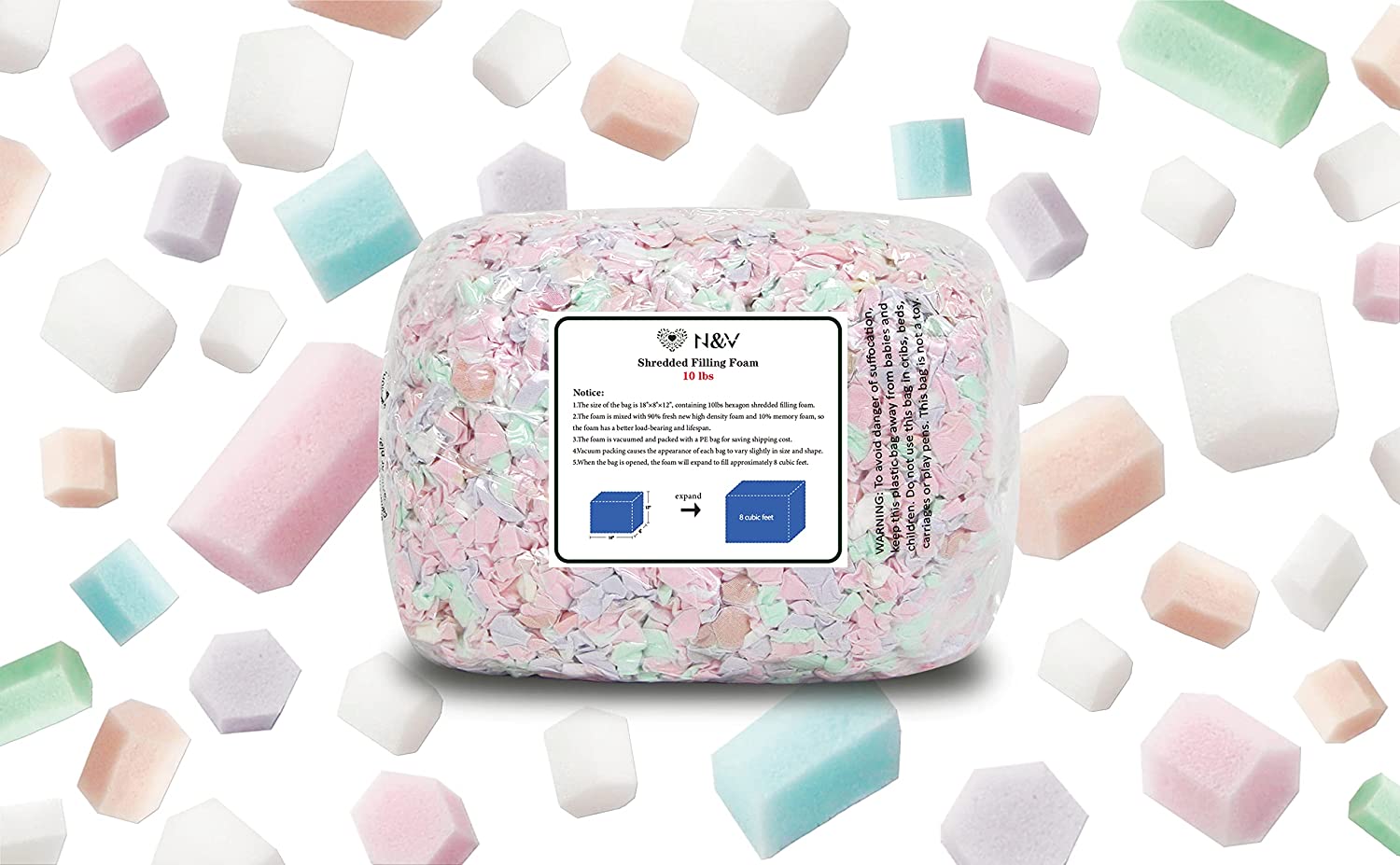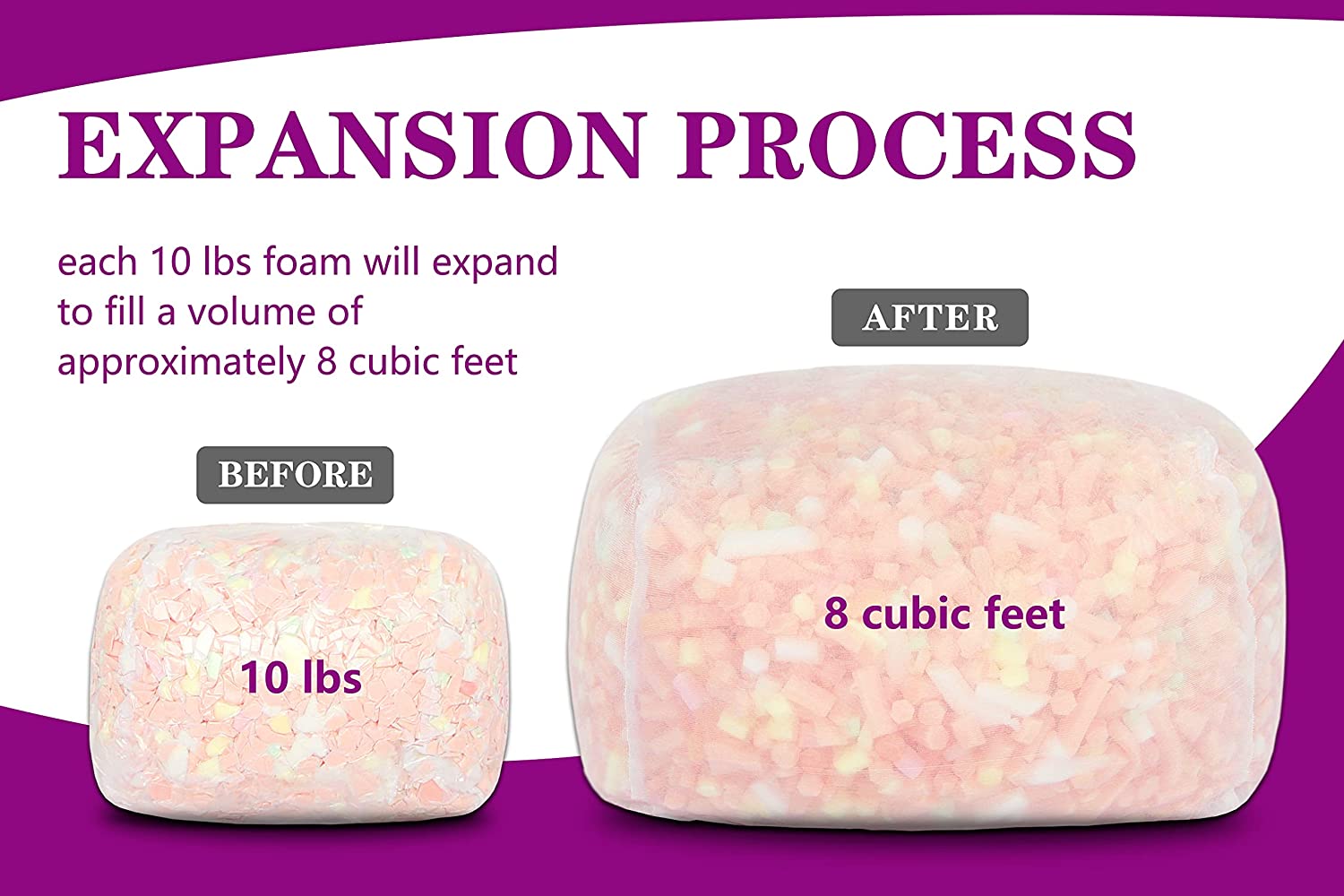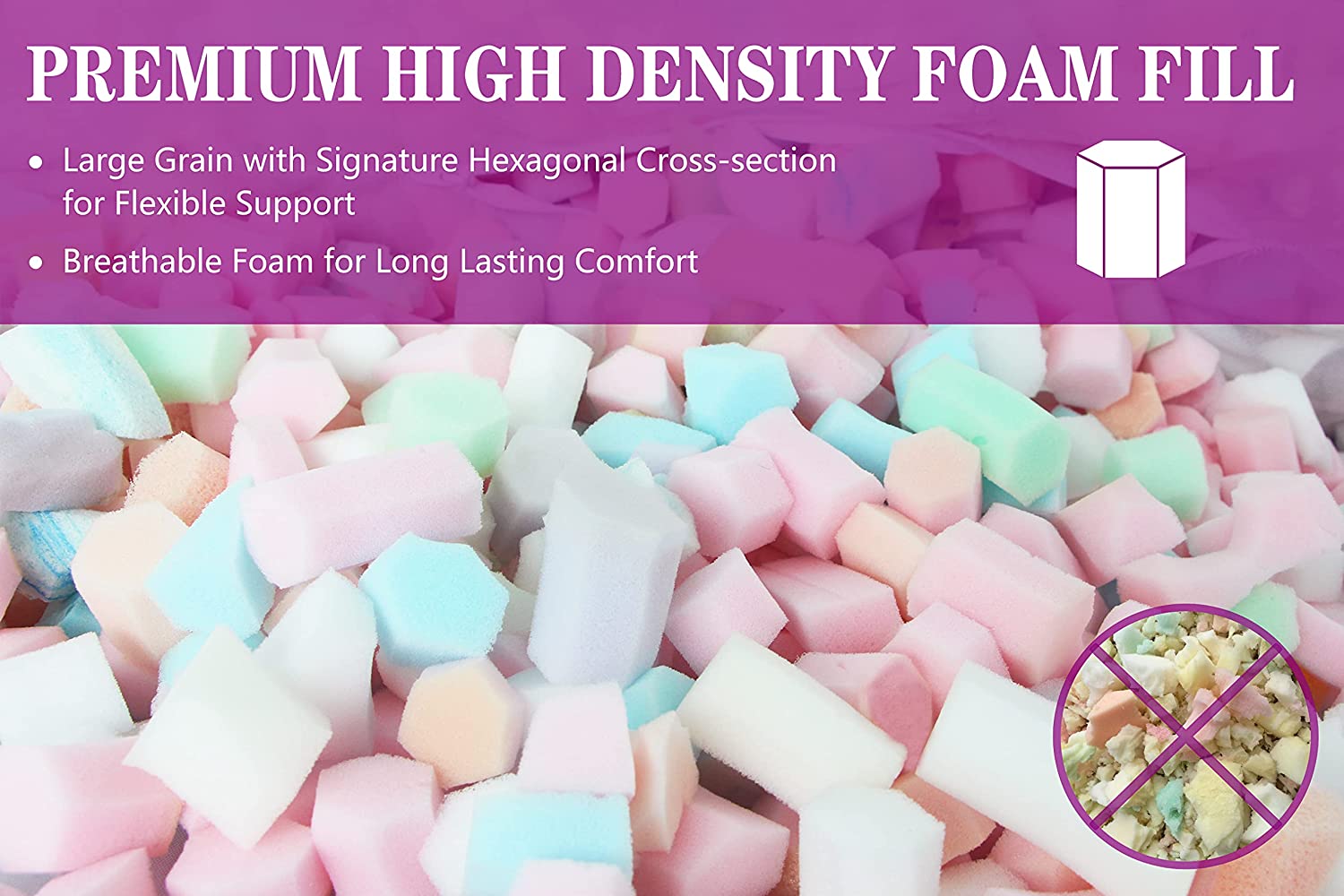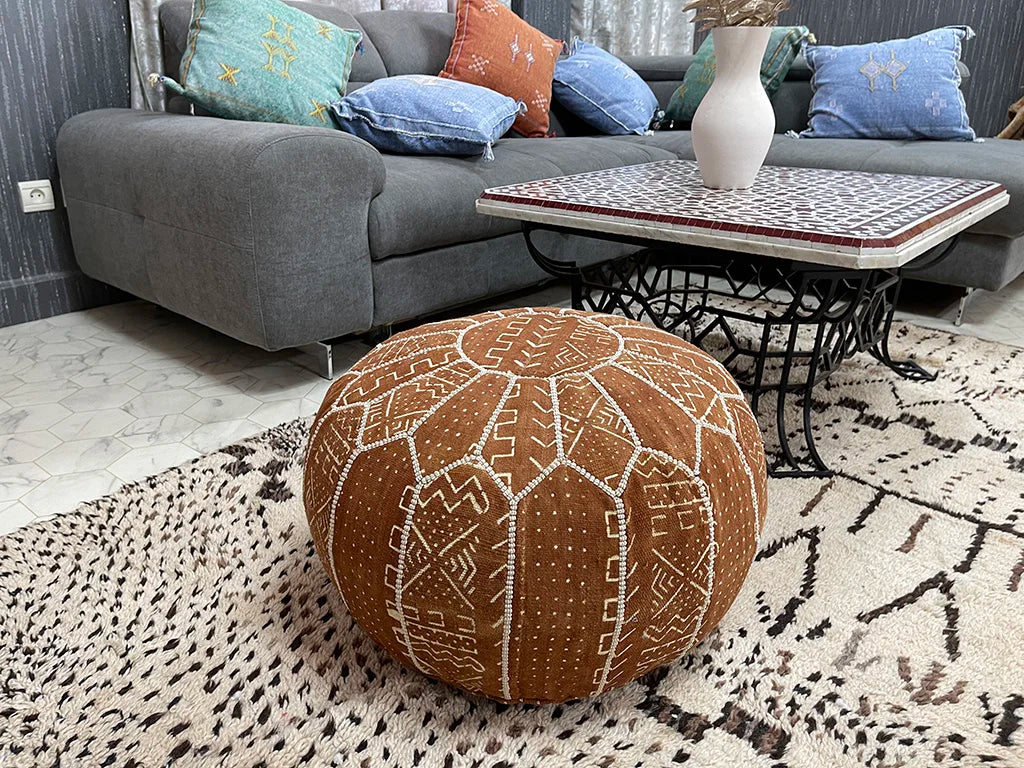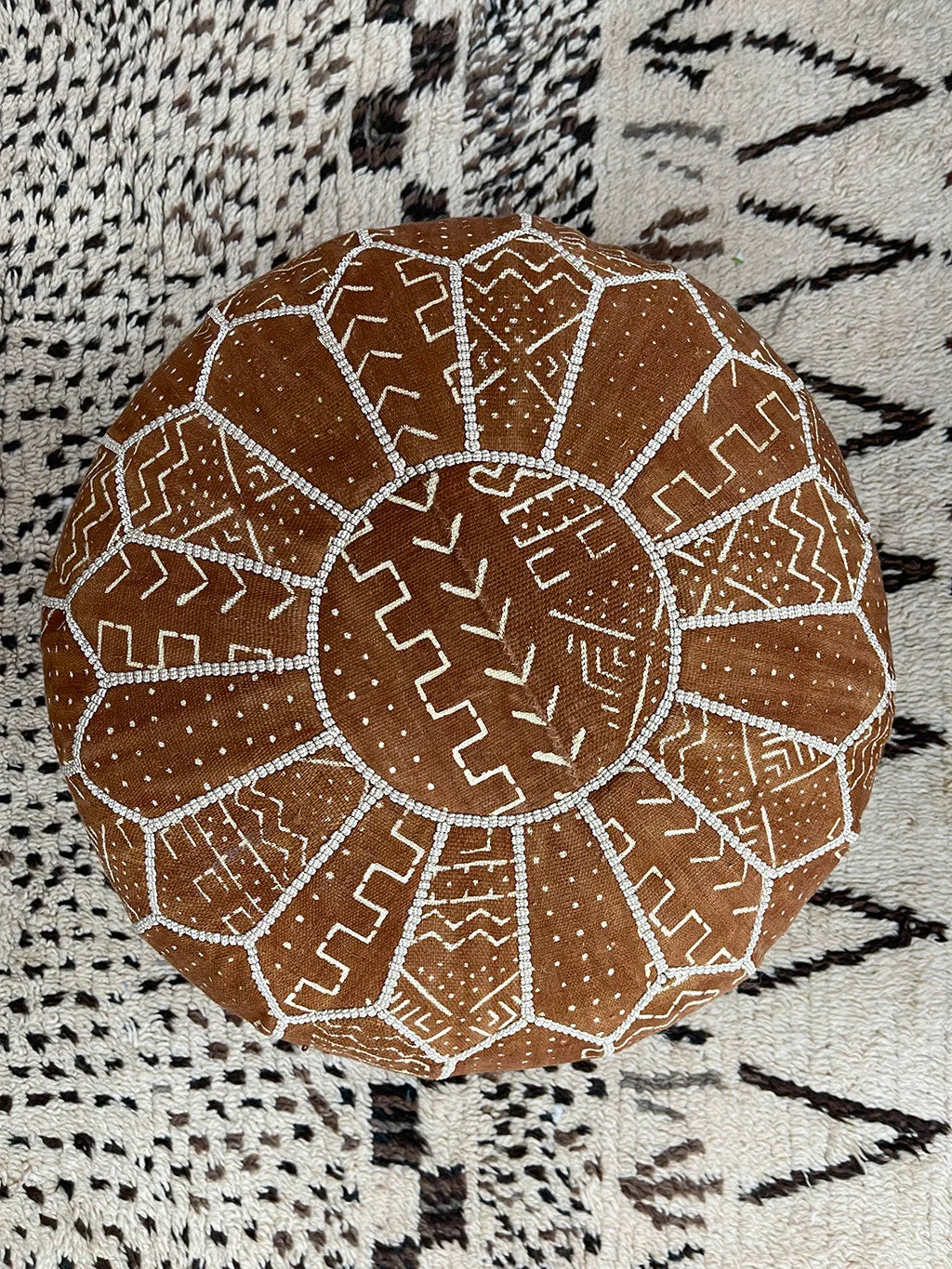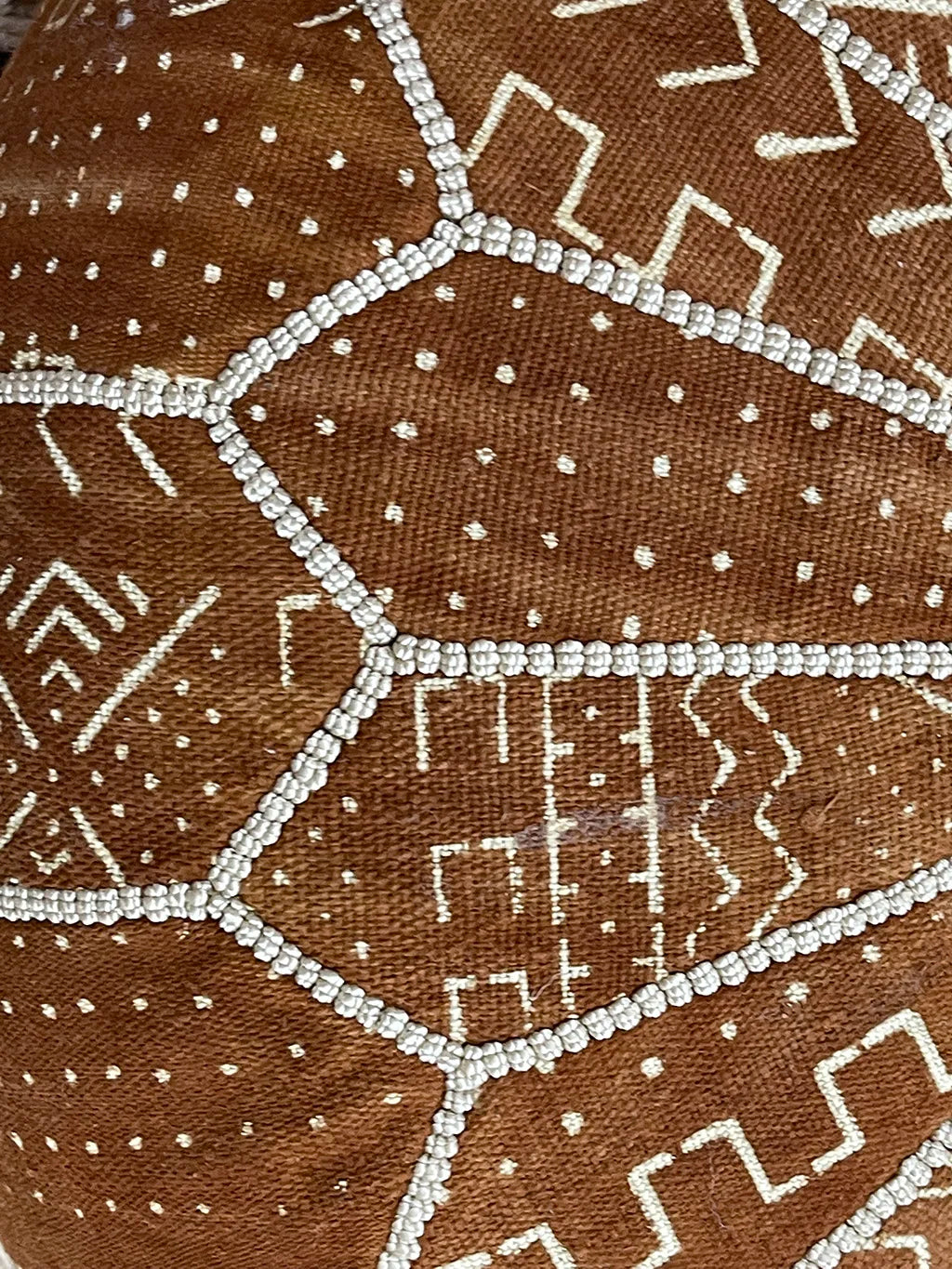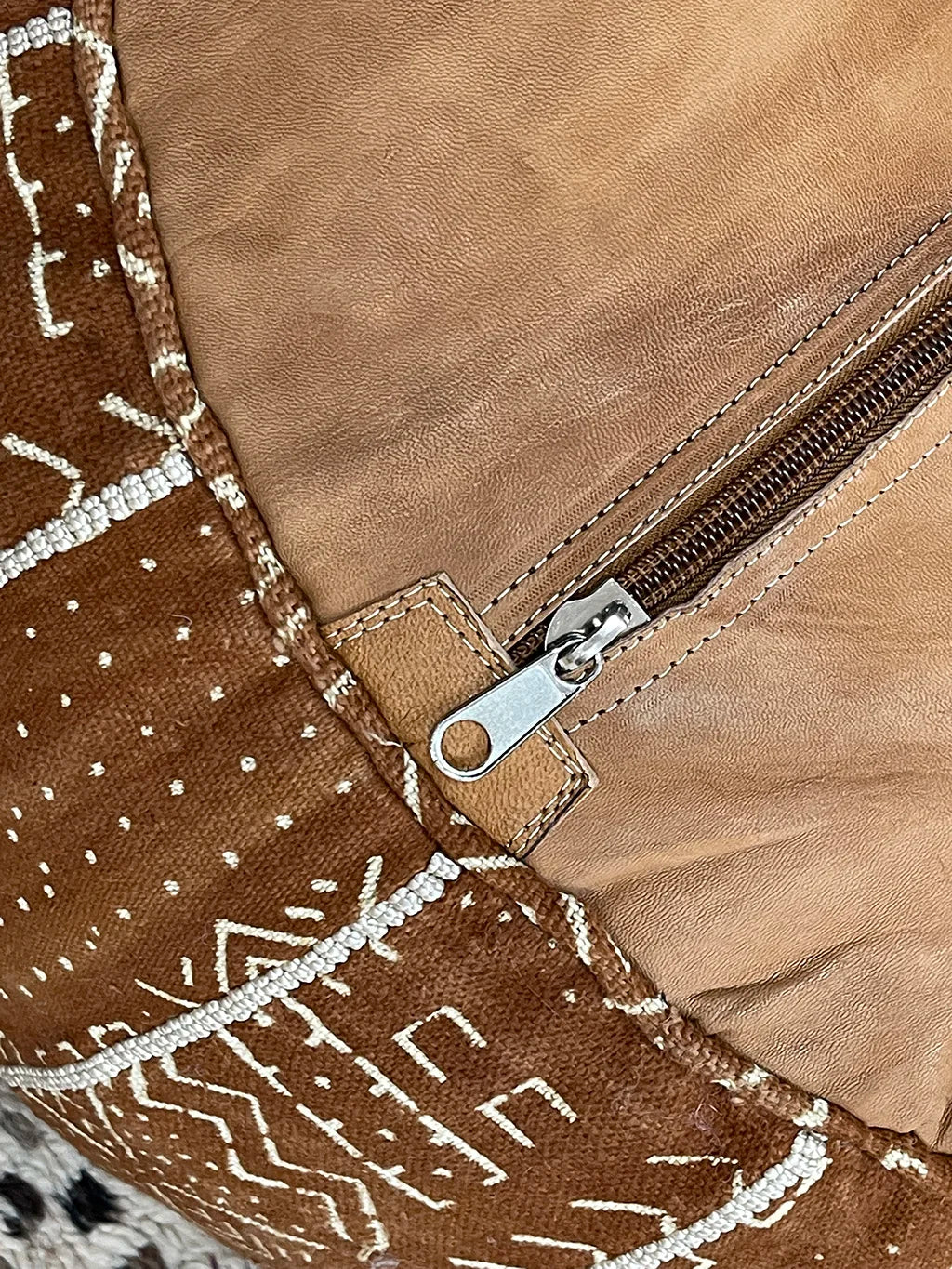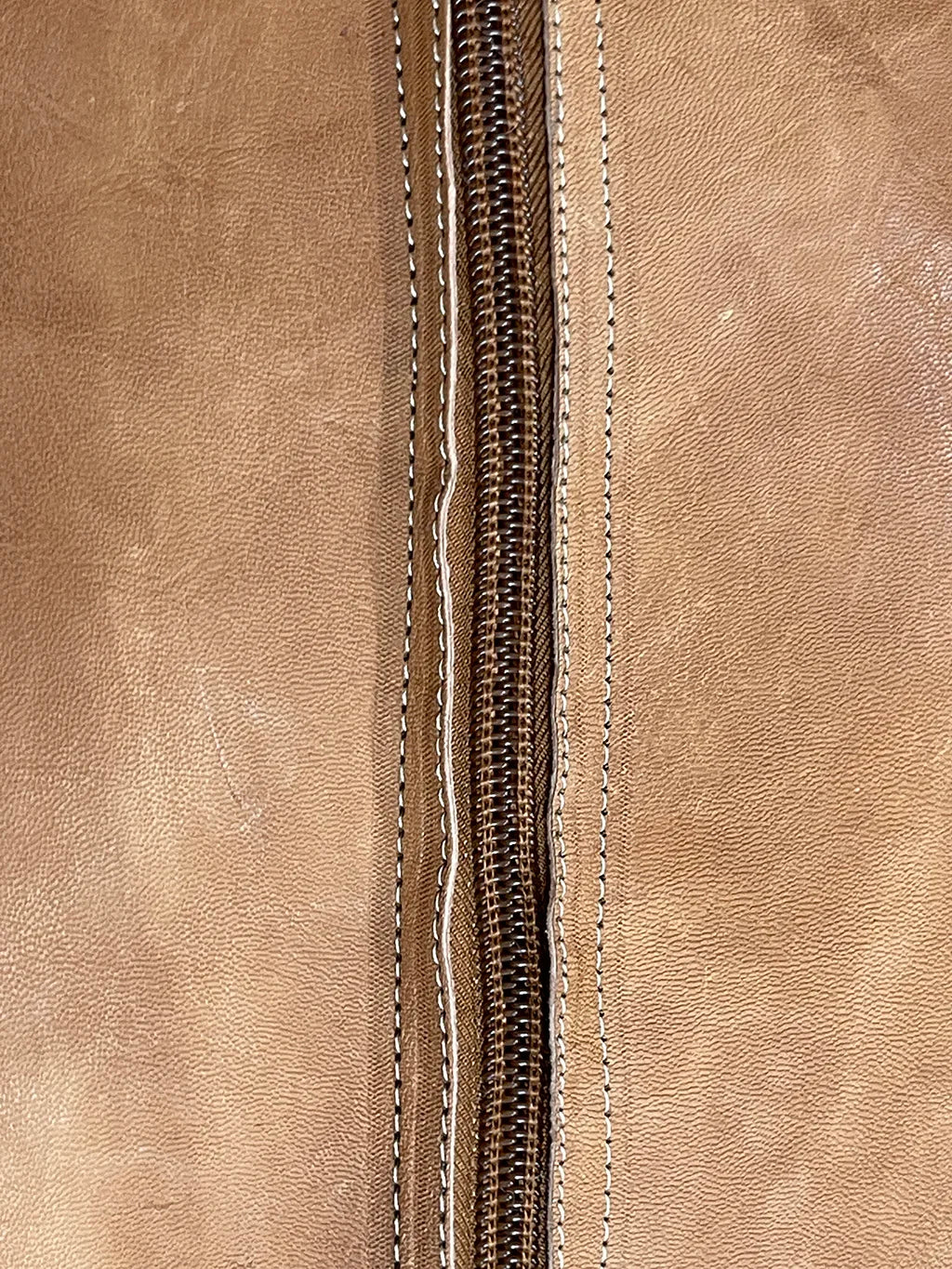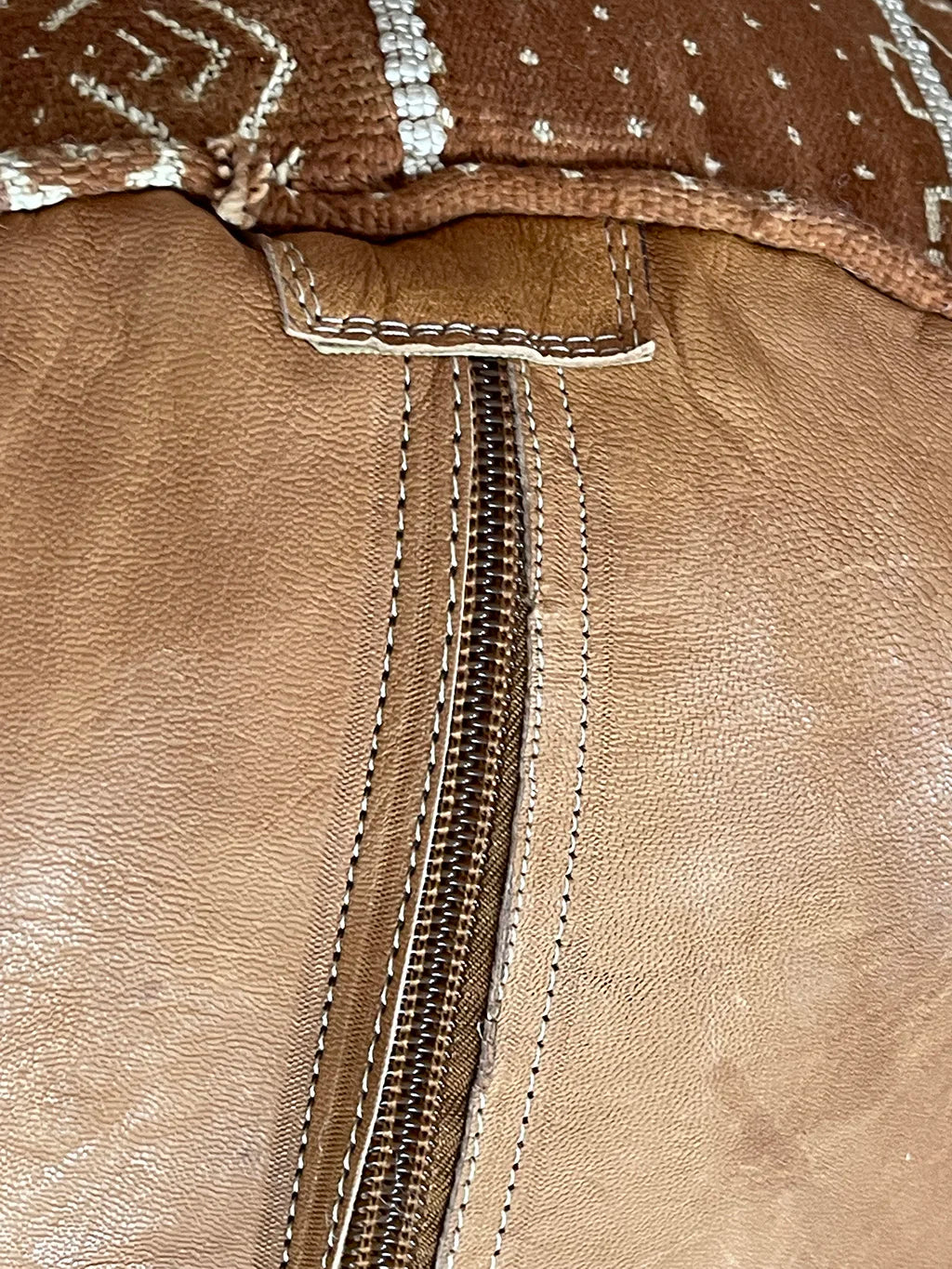Pouf Filling Calculator
Find out exactly how much stuffing you'll need.
What's your pouf's main purpose?
So, you've brought home a beautiful, authentic Moroccan pouf, but it looks a little... deflated? That's by design! Most genuine Moroccan poufs, like the ones you'll find at Kechart, are sold unstuffed. This brilliant shipping method not only makes them more affordable (saving you up to $100) but also gives you the creative freedom to customize their firmness and feel.
Filling your pouf is a simple, rewarding DIY project. Whether you've just purchased one of our authentic leather poufs, this guide will walk you through everything you need to know to transform it from a flat leather disc into a chic, functional piece of furniture.
Why the Right Stuffing is Everything
The filling you choose is the secret ingredient that dictates your pouf's final look, feel, and function. An empty pouf is a blank canvas, but the right stuffing gives it structure, turning it into a cozy footrest, a sturdy extra seat, or a stylish accent piece.
Your choice of material determines:
-
Firmness: From a soft, cloud-like footrest to a solid, supportive seat.
-
Shape: A well-stuffed pouf will have a beautiful, rounded shape without lumps or creases.
-
Weight: A heavier pouf stays in place, while a lighter one is easy to move around.
-
Durability: The right filling will maintain its loft and support for years to come.
Ready to create the perfect accent for your living room? Let's explore the best materials to bring your pouf to life, complementing your other Moroccan home decor.
The Best Filling Options for Your Moroccan Pouf
Most poufs feature a convenient zipper at the base, making them incredibly easy to fill. Here are the best options, from sustainable choices to plush, lightweight fillers.
1. Recycled & Eco-Friendly Fillings (The Recommended Method)
Using old textiles is a sustainable, budget-friendly, and highly effective way to create a perfectly firm and structured pouf.
-
Old Clothes, Towels, and Bedding: This is the top-recommended method for a reason. It creates a substantial, heavy pouf that is perfect for sitting. Gather old jeans, t-shirts, sweaters, bath towels, or even old duvet covers and pillows. This method gives new life to items you'd otherwise throw away, aligning with a more sustainable lifestyle.
-
Pro-Tip: Ensure all fabrics are clean and completely dry before stuffing. Fold items neatly to minimize lumps.
-
-
Newspaper or Plastic Bags: Crumpled newspaper or clean plastic bags can provide excellent firmness and are surprisingly lightweight. This is a fantastic way to recycle household waste.
2. Natural Fiber Fillings
For those who prefer natural materials, these fibers offer excellent performance and feel.
-
Cotton or Wool Batting: Natural and breathable, cotton and wool provide a firm yet soft texture. Wool has the added benefit of being a great insulator. You can find these materials at most craft and upholstery shops.
-
Kapok Fiber: This eco-friendly fiber, harvested from the Kapok tree, is silky, lightweight, and hypoallergenic—often compared to down feathers. It offers excellent support and a fluffy feel.
3. Lightweight Fillings
If you plan to use your pouf more for decoration or need it to be easily portable, these options are ideal.
-
Polyester Fiberfill (Poly-fil): This is the most popular and widely available stuffing, commonly used for pillows and toys. It's soft, lightweight, and provides a plush, luxurious finish. It's an excellent choice if your pouf will be used as a footrest or by children.
-
Polystyrene Beads (Bean Bag Filling): For a very lightweight pouf, EPS beads are a great choice. They are inexpensive and easy to find.
-
Pro-Tip: To prevent a mess, it's wise to contain the beads within a liner, like an old pillowcase, before placing them inside the pouf.
-
-
Pillow Inserts: Old pillows or new cushion inserts work wonderfully. For a standard pouf, three 26-inch feather pillow inserts (like the IKEA FJADRAR) create a substantial, well-filled pouf heavy enough for sitting.
4. Mixed Fillings for the Best of Both Worlds
Don't be afraid to combine materials! A mix-and-match approach can give you the perfect balance of support, weight, and comfort.
-
Fabric Scraps + Polyester Fiberfill: Start with a dense base of old clothes and top it off with polyester fiberfill to fill in any gaps and create a smooth, rounded top. This is the professional's secret to a perfectly shaped pouf.
Step-by-Step Guide: Stuffing Your Pouf Like a Pro
1. Prepare Your Materials Gather more filling than you think you'll need—poufs are surprisingly spacious! As a rule of thumb, a standard pouf can hold about 3 lbs (1.4 kg) of polyester fiberfill or a small laundry basket's worth of old clothes. Make sure everything is clean and dry.
2. Open Your Pouf and Start with the Edges Unzip the pouf and open it to its full shape. Begin by stuffing material firmly around the outer edges and top surface first. This is the most crucial step to ensure the pouf's side panels are defined and you avoid a lumpy, uneven shape.
[Image: Hands carefully pushing folded clothes into the outer edges of an unstuffed leather pouf.] Alt-Text: Stuffing the edges of a Moroccan pouf first to create a defined shape.
3. Fill the Center Once the sides and top are packed, begin filling the center of the pouf. Push the stuffing down firmly as you go. Use a wooden spoon or a small rod to compact the filling and ensure there are no air pockets.
4. Keep Filling Until It's Firm Continue adding material until the pouf is packed tightly. A well-filled pouf should be quite firm to the touch. It will soften slightly with use, so it's better to over-stuff it initially than to have a saggy pouf later. For a beautiful, defined shape, you need to stuff your pouf to the max.
5. Zip It Up This can be a two-person job! Have one person press down on the pouf to compress the filling while the other pulls the zipper closed.
6. Shape and Settle Once zipped, roll the pouf on its side, pat it, and knead it to distribute the filling evenly and perfect its final, rounded shape. Test it out by sitting on it to ensure it feels comfortable and supportive.
Maintaining Your Perfectly Stuffed Pouf
-
Plump It Up: Over time, the filling will compress. Simply unzip the pouf and add more stuffing as needed to maintain its firmness.
-
Rotate Regularly: To ensure even wear on the leather, rotate your pouf every so often.
-
Care for the Leather: To keep the leather soft and beautiful, check out our Guide to Caring for Your Moroccan Leather Goods.
Frequently Asked Questions (FAQ)
Q: How much filling do I need for a standard pouf? A: For a standard pouf (approx. 21" diameter x 12" high):
-
Polyester Fiberfill: About 3 lbs (or two 20-ounce bags) for a soft fill. Use 4-5 lbs for a firm, sittable pouf.
-
Old Clothes: A small laundry basket full. Think 5-7 pairs of old jeans plus some t-shirts.
-
IKEA Feather Pillows: Three 26-inch feather inserts create a fantastic, heavy fill.
Q: Can I mix different types of fillers? A: Absolutely! Mixing fillers is a great way to get the best results. A base of firm materials like old clothes topped with soft polyester is a popular combination for achieving both structure and comfort.
Q: What is the most eco-friendly way to fill a pouf? A: The most sustainable option is to use recycled materials you already have at home, such as old clothes, towels, bedding, and even newspapers.
Bring Moroccan Artistry Home
Filling your pouf is the final, personal touch that makes it truly yours. It’s a simple process that guarantees a beautiful and functional piece of art for your home.
Ready to start your project? Explore our stunning collection of authentic Moroccan poufs at Kechart and find the perfect one to complement your style.






